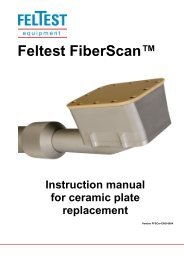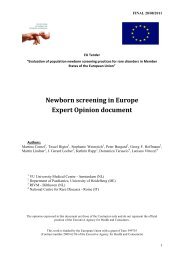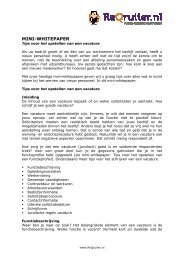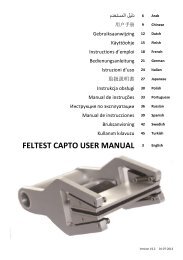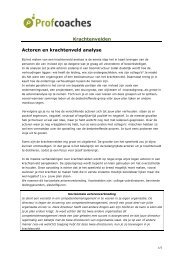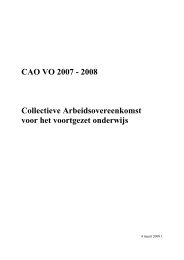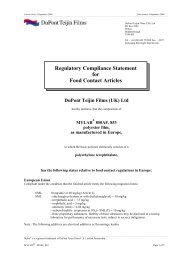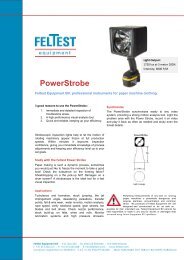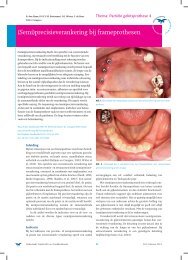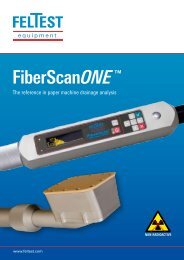PHENYLKETONURIA IN MOLDOVA â NEONATAL SCREENING ...
PHENYLKETONURIA IN MOLDOVA â NEONATAL SCREENING ...
PHENYLKETONURIA IN MOLDOVA â NEONATAL SCREENING ...
Create successful ePaper yourself
Turn your PDF publications into a flip-book with our unique Google optimized e-Paper software.
<strong>PHENYLKETONURIA</strong> <strong>IN</strong> <strong>MOLDOVA</strong> –<br />
<strong>NEONATAL</strong> SCREEN<strong>IN</strong>G ABOUT 20 YEARS<br />
Usurelu Natalia,<br />
Burgoci Vasile, Boiciuc Kiril,<br />
Halabudenco Elena, Stratila Mihail<br />
e-mail: natalia.usurelu@yahoo.com<br />
The National Centre of Reproductive Health and Medical Genetics,<br />
Chisinau, Moldova, www.reprogenetics.md<br />
ISNS, 2012, Hungary
Republic of Moldova<br />
Moldova,<br />
is a landlocked country in<br />
Eastern Europe, located<br />
between Romania to the west<br />
and Ukraine to the north, east<br />
and south.<br />
The country is a parliamentary<br />
democracy with a president as<br />
its head of state and a prime<br />
minister as its haed of<br />
government<br />
- nowadays-politic and economic<br />
crisis<br />
ISNS, 2012, Hungary
Moldova enjoys a favorable<br />
climate and good farmland but has<br />
no major mineral deposits. As a<br />
result, the economy depends<br />
heavily on agriculture, featuring<br />
fruits, vegetables, Moldovan wine,<br />
and tobacco. The country is<br />
considered to have the cleanest air.<br />
ISNS, 2012, Hungary
The National Centre of Reproductive 82 Burebista str.,<br />
Health and Medical Genetics Chiinu, MD 2062<br />
www.reprogenetics.md<br />
Departaments:<br />
• Consultative<br />
• Scientific<br />
Services:<br />
• Medico-genetic consultation<br />
• Prenatal diagnostic<br />
• Cyto-genetic investigations<br />
• Molecular-genetic analysis<br />
• PKU neonatal screening<br />
ISNS, 2012, Hungary
Neonatal PKU Screening in Moldova<br />
• NBS exists from 1989 (PKU, CH stopped after 4 yrs)<br />
• NBS for PKU functioned continuos till 2003<br />
• was restarted at the end of 2006 and is operating till now<br />
ISNS, 2012, Hungary
Fluorimetric method - McCaman&Robins modifications<br />
with Anilabsystems reagents (Finland).<br />
20<br />
18<br />
16<br />
14<br />
12<br />
10<br />
8<br />
The cut-off value is 3 mg/dL.<br />
20<br />
6<br />
4<br />
2<br />
1<br />
2<br />
3<br />
0<br />
normal heterozygous cut-off PKU<br />
ISNS, 2012, Hungary
The dynamic of screening rate<br />
99,2%<br />
ISNS, 2012, Hungary
period<br />
PKU in <strong>MOLDOVA</strong> 1993-2011 (available data from 1993)<br />
newborns<br />
screened<br />
newborns<br />
Screening<br />
rate,<br />
Frequency<br />
Confirmed<br />
PKU<br />
%<br />
1993 66 058 52 384 79,3 1:7483 7<br />
1994 63 638 51 113 80,3 1:8518 6<br />
1995 56 716 40 369 71,2 1:5046 8<br />
1996 53 326 36 361 68,2 1:6060 6<br />
1997 49 364 30 680 62,2 1:6136 5<br />
1998 44 410 32 042 72,2 1:6408 5<br />
1999 42 854 26 491 61,8 1:8830 3<br />
2000 36 942 24 784 67,1 1:12392 2<br />
2001 36 452 26 034 71,4 1:4339 6<br />
2002 35 705 34 001 95,2 1:5666 6<br />
2003 36 472 32 952 90,3 1:8238 4<br />
2007 37973 21308 56,1 1:7102 3<br />
2008 39020 16080 30,8 1:8040 2<br />
2009 41861 31867 76,1 1:7966 4<br />
2010 39573 38425 97.1 1:19213 2<br />
2011 39874 39555 99.2 1:9969 4<br />
TOTAL 720 238 534 765 74.2 1:7326 73
PROBLEM<br />
1<br />
The 1rst priority - to obtain 100% coverage!<br />
Organization:<br />
• The samples collection in maternities ( monitoring of<br />
testing and regular supply of screening cards)<br />
• The regular sending of samples to Screening Lab<br />
• The sufficient ensuring of Lab Reagents, screen cards<br />
• The good functioning of apparatus and Screen Lab<br />
• Press coverage about neonatal screening (people,<br />
doctors through the booklets, posters, TV, etc.)<br />
ISNS, 2012, Hungary
PROBLEM<br />
high number of samples-rebut<br />
2<br />
Year<br />
Nr.newborns<br />
Screened<br />
Coverage,<br />
%<br />
Suspected,<br />
%<br />
Rebut,<br />
%<br />
Retested,<br />
%<br />
PKU<br />
2007<br />
37973<br />
18294<br />
48.2%<br />
1.18%<br />
56.7%<br />
3<br />
2008<br />
39020<br />
12010<br />
30.8%<br />
0.77%<br />
42.4 %<br />
2<br />
2009<br />
41861<br />
31867<br />
76.1 %<br />
1.98 %<br />
2.75%<br />
68.8 %<br />
4<br />
2010<br />
39573<br />
38425<br />
97.1 %<br />
1.25 %<br />
1.43 %<br />
73.3 %<br />
2<br />
2011<br />
39874<br />
39555<br />
99.2 %<br />
0.82 %<br />
0.93 %<br />
33.7 %<br />
4<br />
2012<br />
32467<br />
27147<br />
83.6 %<br />
0.78 %<br />
0.65 %<br />
68.0%<br />
2<br />
9 mo<br />
ISNS, 2012, Hungary<br />
The samples are not accurately!<br />
The samples don’t contain the blood!<br />
The ring is not full filed!
Reminder letters to<br />
maternities<br />
what samples are correct<br />
and what samples are<br />
wrong to be performed<br />
in Screening Lab<br />
ISNS, 2012, Hungary
PROBLEM<br />
3<br />
• The sample does not<br />
contain the address<br />
• Phe was elevated!<br />
• It should be retested!<br />
ISNS, 2012, Hungary
Accompanying list of additional information<br />
ISNS, 2012, Hungary
PROBLEM<br />
4<br />
Poor informed people about neonatal screening!<br />
Year<br />
Nr.newborns<br />
Screened<br />
Coverage,<br />
%<br />
Suspected<br />
,%<br />
Rebut,<br />
%<br />
Retested,<br />
%<br />
PKU<br />
2007<br />
37973<br />
18294<br />
48.2%<br />
1.18%<br />
56.7%<br />
3<br />
2008<br />
39020<br />
12010<br />
30.8%<br />
0.77%<br />
42.4 %<br />
2<br />
2009<br />
41861<br />
31867<br />
76.1 %<br />
1.98 %<br />
2.75%<br />
68.8 %<br />
4<br />
2010<br />
39573<br />
38425<br />
97.1 %<br />
1.25 %<br />
1.43 %<br />
73.3 %<br />
2<br />
2011<br />
39874<br />
39555<br />
99.2 %<br />
0.82 %<br />
0.93 %<br />
33.7 %<br />
4<br />
2012<br />
32467<br />
27147<br />
83.6 %<br />
0.78 %<br />
0.65 %<br />
68.0%<br />
2<br />
9 mo<br />
ISNS, 2012, Hungary
• Poster copii PKU<br />
ISNS, 2012, Hungary
PROBLEM<br />
2 nd or 3 rd day of life?<br />
5<br />
Year<br />
Nr.newborns<br />
Screened<br />
Coverage,<br />
%<br />
Suspected<br />
%<br />
Rebut,<br />
%<br />
Retested,<br />
%<br />
PKU<br />
2007<br />
37973<br />
18294<br />
48.2%<br />
1.18%<br />
56.7%<br />
3<br />
2008<br />
39020<br />
12010<br />
30.8%<br />
0.77%<br />
42.4 %<br />
2<br />
2009<br />
41861<br />
31867<br />
76.1 %<br />
1.98 %<br />
2.75%<br />
68.8 %<br />
4<br />
2010<br />
39573<br />
38425<br />
97.1 %<br />
1.25 %<br />
1.43 %<br />
73.3 %<br />
2<br />
2011<br />
39874<br />
39555<br />
99.2 %<br />
0.82 %<br />
0.93 %<br />
33.7 %<br />
4<br />
2012 IX<br />
32467<br />
27147<br />
83.6 %<br />
0.78 %<br />
0.65 %<br />
68.0 %<br />
2<br />
• Fals-negative and fals-positive results<br />
ISNS, 2012, Hungary
Conclusions:<br />
• Children born with Phenylketonuria can now<br />
expect a normal life due to the newborn<br />
screening and early treatment programs, but a<br />
repeated screening test should be performed in<br />
a slow developed infant.<br />
• A good organization and management of<br />
neonatal screening is essential for obtaining<br />
the best results.<br />
ISNS, 2012, Hungary
They’ll build up our future,<br />
we must assure them the present!<br />
ISNS, 2012, Hungary




